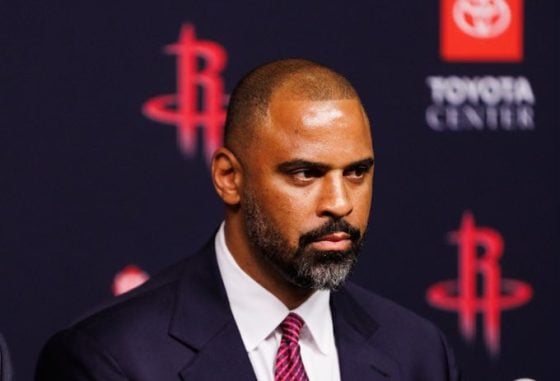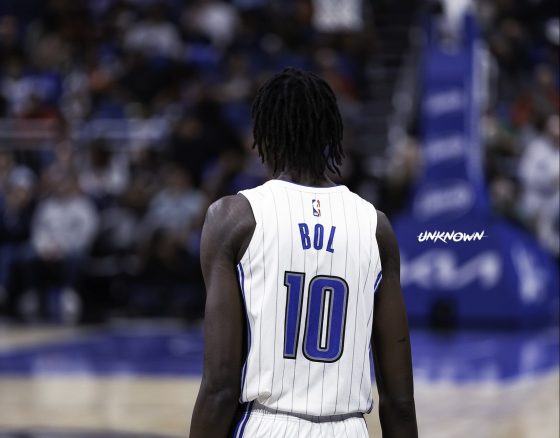For teams in the Turkish Airlines EuroLeague, there’s clutch shooting and then there’s super clutch.
High-gravity matchups
The Round 13 rematch of the 2021 Turkish Airlines EuroLeague Championship Game lived up to expectations as FC Barcelona earned a hard-fought overtime win over Anadolu Efes Istanbul.
In a clash of style between this season’s top pick-and-roll attack and its most imposing interior offense, it was ultimately a clutch and-one floater by 21-year old guard Rokas Jokubaitis that sealed the deal to keep Barcelona at the top of the standings.
Clutch and Super Clutch
While Jokubaitis’s shot falls under the definition of a clutch shot, more specifically, it was super clutch. The growing availability of more accurate publicly available play-by-play over the last 15 years precipitated the development of several different widely accepted clutch splits.
From the standard under 5 on the clock and on the scoreboard to Mike Beuoy’s sophisticated win-probability-based approach on unpredictable or even just a count of game-winning plays, there are a handful of established methods to define late-game heroics.
Roland Beech’s 82games was an early pioneer in tabulating advanced statistics for public consumption on the web and their definition of ultra or super clutch is a strong fit for the modern EuroLeague.
The competitiveness of EuroLeague games is well-established at this point. The league has tremendous parity with nearly 43% of all possessions coming in “two-possession games” and even double-digit wins frequently growing out of back-and-forth first halves. With some teams playing nearly 75% of their possessions this season within 6 points of their opponents on the scoreboard, the standard definition of clutch catches large chunks of what is really just normal EuroLeague basketball.
Enter, super clutch – defined as possessions in the last 2 minutes of the fourth quarter or any overtime period with the margin on the scoreboard being 3 or fewer points. Focusing more closely on what tends to be crunch time for EuroLeague clubs, it catches the small windows that, over the course of a long season, often define who sneaks into the playoffs due to how crowded that part of the standings often proves to be.
While the average super clutch possession is worth only marginally more than the rising overall EuroLeague average by a count of 0.99 points per possession to 0.96, the factors that carry those numbers are very different. Two key things distinguish the action in the super clutch: the intersection of desperation fouls and free throw shooting and shot quality against a set defense. From a statistical perspective, small sample size bias is also a factor as only 1.6% of all possessions qualify as super clutch, but that is not going to change the impact of shots like the one Jokubaitis converted against Efes on the standings heading into Round 14.
The small sample sizes also highlight how spread-out super clutch touches tend to be.
No player in the EuroLeague has used over 11 possessions under those conditions, even among teams with significant usage. In fact, only one player has scored over 30 points in the super clutch over the last four seasons: Vladimir Lucic, who scored 39 to help FC Bayern Munich secure their first postseason appearance last year.
For some teams, the small sample sizes to this point reveal as little as one would expect, but for others, it already tells a story. For example, Will Clyburn scored all of his EuroLeague-leading 11 points over a wild 2 minutes to close a win over Bayern in Round 12. His play in that span is the reason CSKA sits on the eight-win line. On the other side of the spectrum, teams have shot a disproportionately strong 20 for 21 from the foul line closing games against Fenerbahce, which is perhaps the biggest reason its record does not match its otherwise solid efficiency profile.
Olympiacos Piraeus has held teams to just 3-of-19 shooting from the field in the super clutch as the Reds’ defensive performance resulted in wins in Rounds 7 and 13 and are a big reason they sit one game clear of the fray in the standings. Combine that with the play of Kostas Sloukas and the big shot Sasha Vezenkov made against UNICS last week and they have been arguably the EuroLeague’s most clutch team.
Olympiacos’s ability to force misses is notable. Though a relatively small 63% of all possessions in the super clutch result in a field goal attempt compared to 77% of all other possessions, those late-game shots tend to be a differentiator for some of the league’s top teams. While three-point shooting dips from 35% to 28% and two-pointers fall from 53% to 50% under these conditions, being able to force a miss without fouling is key as free-throw shooting rises from 76% to 80% with teams subbing in their more reliable foul shooters. With teams shooting nearly two and a half times as many free throws in the super clutch as they do the rest of the game, keeping teams off the line is a signal of things going right for a team down the stretch.
Round 13 was a memorable one. One of the big things that makes the EuroLeague so compelling is not just how wild things tend to get late in close games but how many games wind up being that close. Regardless of which model someone uses to measure that, the drama is real every week.
Looking ahead to Round 14
This week’s edition of El Clásico will reflect that drama even more than usual as FC Barcelona hosts Real Madrid on Friday in a game to determine which team sits atop the standings next weekend. Without Nick Calathes and Cory Higgins, Barcelona pounded the ball inside in Round 13, but their ability to dominate the paint with Walter Tavares on the floor for Real Madrid is a storyline to watch as the clubs renew one of sports’ greatest rivalries.






